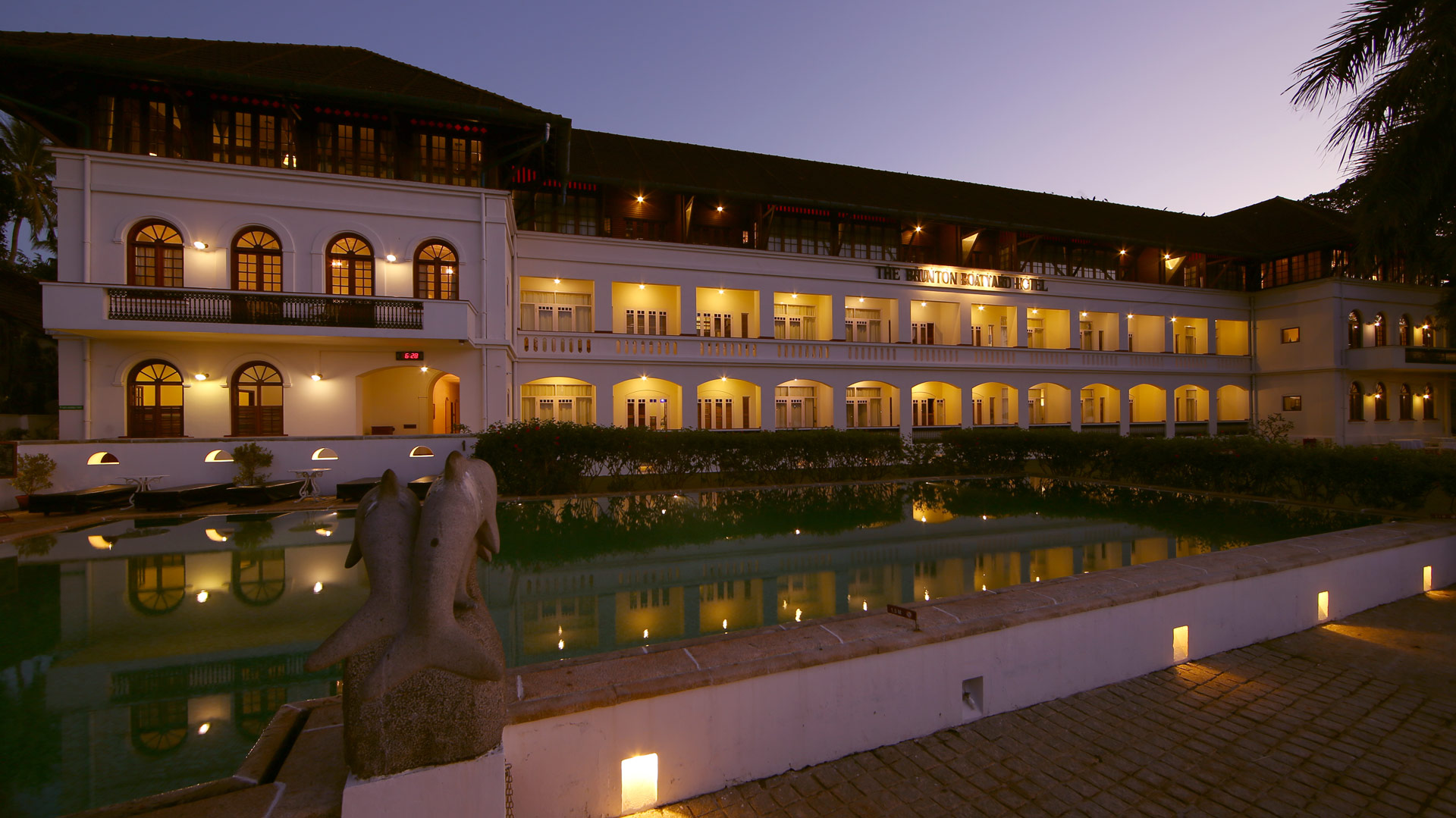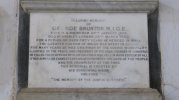norfolk brummie
gone but not forgotten
I didn't realise that the 1950's singer David Hughes came from Bournbrook, i always thought he was welsh.
When the door bell at his home was pressed, it chimed Cara Mia Mine.
Eddie
I didn't realise that the 1950's singer David Hughes came from Bournbrook, i always thought he was welsh.
Not sure if this qualifies but back in 1970's a guy who taught us at North Birmingham tech, who then worked at Lucas is now Lord Bhattacharyya, I think I spelt that correctly.

Beautiful - I am always in awe of people who can produce work like that. At least artists can paint over slips - masons can't.
Of course now with the power age taking over, a lot different. I remember Mr. Bloye always liked flowing lines, even when carving Roman letters and numbers in stone or wood, .We used quill pens held at a angle to draw with them. Took a real steady hand. As our residence artists on this group will attest.so am i jan but then in despair when these wonderful works of art which in many cases has taken years to create are demolished within a blink of an eye...i get so very very angry
lyn


You basically have to have been dead for 20 years, for your legacy to have been suitably assessed. Whether you were born here, died here or you lived here for a time qualifies you for the association.A reply to this old thread says "no". Well I disagree. How do you define a famous person of Birmingham? Surely it's a very narrow concept to only consider people actually born in Birmingham? Many of Birmingham's famous people were not born in Brum but were long associated with Brum after they became famous.
What about:
William Hutton
Prof. Fred Lanchester
James Watt
& my favourite author Lee Child to name a few.
Kumar Bhattacharyya is the foremost engineer of his generation and well deserved his title. He is alive and well living in Moseley in the former Lucas home.
What do other members think?
Notable Birmingham People
JOHN SKIRROW WRIGHT 1822-1880
John Skirrow Wright is a man who in Birmingham’s current consciousness has all but disappeared and yet he was a man who was almost omnipresent in all aspects of Birmingham’s mid-Victorian life that were for the benefit of its citizens. The General Hospital, the Chamber of Commerce, The School of Art, the Children’s Hospital and the early Birmingham Hospital Saturday Fund and the Blue Coat School, to name but a few, were all blessed by his active allegiance in time as well as money.
Born in 1822, he came to Birmingham in 1838 where he was employed at the button manufactory of Smith and Kemp, where his talents marked him for a swift ascendancy from traveller to partner in 1850. As with many of Birmingham’s great patrons, he was a non-conformist and whilst sharing the profits of his enterprise, he nonetheless opposed factory legislation, arguing that it interfered with the individual employer.
Whilst President of the Birmingham Chamber of Commerce JSW came up with the idea of Postal Orders, to enable the poorer people to have the same facility to buy goods and services by post. The rich had bank accounts and could write cheques.
A delegation of the Birmingham Chamber went to the annual meeting of Chambers of Commerce in London and John Skirrow Wright presented the idea, complete with all the details on how it would work including all the Postal Order values proposed.
At first London bankers were against the idea, thinking it would affect their businesses, and the idea was rejected. However, eventually the bankers realised that the people who would use postal orders were not their customers and therefore no threat to their business. Consequently, at the Annual Meeting a year later John Skirrow Wright presented the idea again and this time it was accepted and the Postal Order system was started exactly as Skirrow Wright and Birmingham Chamber had proposed.
He became the first chairman of the Birmingham Liberal Association and in 1880 stood for parliament as a Liberal in Nottingham – a position in those far off days that was greatly revered. At the same time he had been helping the Liberal cause in re-elections at Birmingham. Unfortunately on the evening of his success, at a dinner held in his honour at the Council House, he expired to the shock of all.
Mr Wright was subsequently interred at Key Hill Cemetery. The funeral took place on a hot spring day - the 19th April 1880 and was conducted with the splendid pomp and ceremony that was the signature of our Victorian forebears. Thousands of Birmingham men, women and children lined the procession route, so that over 300 policemen were involved to keep the route clear. The funeral had been arranged by the Metallic Airtight Coffin Co Ltd of Great Charles Street and whilst the coffin was indeed metal lined, it was nevertheless tastefully created in oak with brass furniture. The inscription on it read “ John Skirrow Wright, died April 15th 1880, aged 58 years”. On the lid of the coffin were placed a number of wreaths made from white camellias, hyacinths, primulas, lily of the valley and maidenhair fern.
Following the open he.... were over 20 carriages in the cortege, which, as they set off were accompanied by the melancholy tolling of the bell of Handsworth Old Church. Along the route curtains and blinds of houses were closed and even shops had closed for the day out of respect. At the Recreation Ground in Burbury Street, a procession of representatives from the public bodies of Birmingham formed and walking four abreast also processed to the cemetery at Key Hill until it arrived at the gates, when it split into two so that the he.... passed through the throng.
The first part of the funeral service was conducted at The People’s Chapel, which was arrived at by 3.00 pm. After the service, the congregation left to the strains of “The Dead March” from Saul and from there onwards, the procession wended its way on foot to the last resting place of Wright. As the coffin was lowered into the ground, the assembled people sang “Rock of Ages”.
After his death, the Mayor of Birmingham, Mr Richard Chamberlain, convened a memorial committee. Most of the town politicians at the time felt that they did not wish to erect a statue, but rather more erred in favour of a portrait to hang in the new art gallery, or perhaps a bust to be placed in the Council House. Unfortunately this was contrary to the expectation of the man in the street, who felt that the only way to honour Mr Skirrow Wright was to erect a noble statue to his memory. One such person of this persuasion was a Mr Apperley who wrote to the Birmingham Daily Post, arguing that a bust in a niche of the Council House would rarely be seen except when given permission to enter the Council House. He stated that “We will have a statue if we buy it ourselves” and made it clear that the people wanted “something whereby we can show our children the form of one we love so well and instil in them the good qualities he possessed. If ever a man deserved a statue Mr Wright does and if ever the working men want a statue to anyone they want one to him”
Eventually it was concluded that a statue would fit the bill and Francis Williamson was given the commission which was wrought in marble and unveiled in front of the Council House by John Bright MP on 15th June 1883. The Birmingham Daily Mail reported that the pose of the figure was admirable with Mr Wright standing in a bold upright attitude as was his won’t when addressing an audience.
The statue stood in Council House Square with Joseph Priestly, and was joined by the statue to Queen Victoria in 1901. However the death of Edward VII saw that Messrs Priestly and Wright were despatched to Chamberlain Place, so that the Toft memorial to Edward VII could take pride of place next to his mother.
In 1914 The Builder (a national journal for the architect and all those interested in the constructive and decorative arts) had written a review on Birmingham’s public monuments and had generally disparaged the city’s attempts at honouring it’s great and good and criticised much of the execution and settings of its statues. However, despite calling the Chamberlain Fountain miserable and Chamberlain Place “squirt square” (!) it found the least unsatisfactory feature that of the John Skirrow Wright statue and despite such unfortunate adjectives as “cold”, “stiff” and “provincial” it conceded that of all Birmingham’s statues, this displayed a simple and refined design and that the figure and the base displayed a certain amount of cohesion.
The statue remained in Chamberlain Place until 1951 when it was removed to a storage depot as no suitable place for it could be found. The consequence of this dispossession was that the statue was scrapped, but not before a bronze copy of the bust was made in 1956 by William Bloye.
In a superb act of irony, the bust was unveiled in a niche in the Council House on 13th September 1957 where it remains to this day. It is half way up the stairs on the left and in quite an obscure place where only the avid seeker may find it – how appalled would be the working man of the 1880’s in casting into obscurity their great benefactor.
Stephen Hartland
The Birmingham Civic Society
29th April 2006
I have posted this with the permission of Stephen Hartland who also supplied the photo's.

 en.wikipedia.org
en.wikipedia.org






